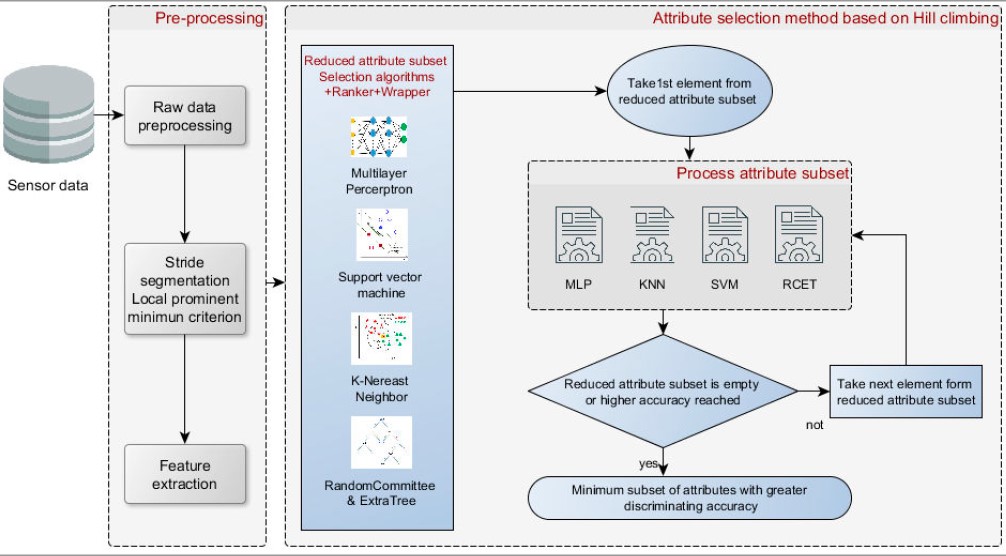The progressive impairment analysis in gait from neurological diseases patients such as Hereditary Ataxias (HA) has been carried out using gait data collected with movement sensors. This research is focused on finding the minimum amount required of gait features to recognize efficiently and less intrusive way, HA patients based on data collected with iPhone movement sensors placed on the ankles from 14 HA patients and 14 healthy people. A twofold proposal is made , first a local minimum prominent peak criterion to find out the starting point of each stride, to get 10-stride window about which 56 spatial-temporal features are derived; second a search strategy based on Hill Climbing algorithm to reduce the number of gait features and sensors. The main results were the findings that with two gait patterns a 96% of classification accuracy was achieved by using K-Nearest Neighbors (KNN) and Multi-Layer Perceptron (MLP) algorithms, but in addition, MLP only right ankle sensor patterns were required which also allows to reduce the intrusion.

